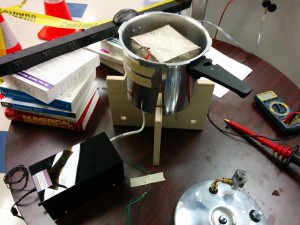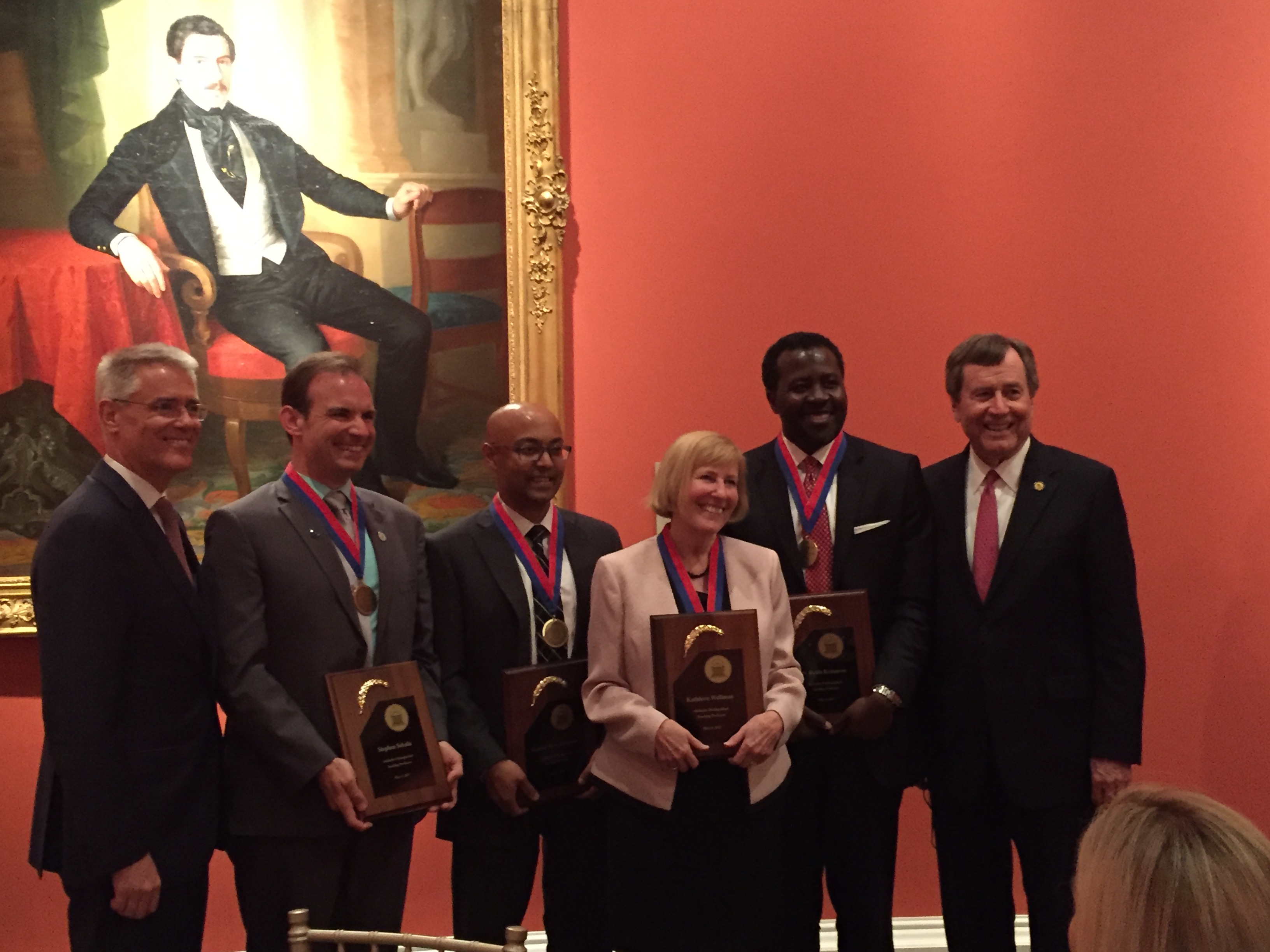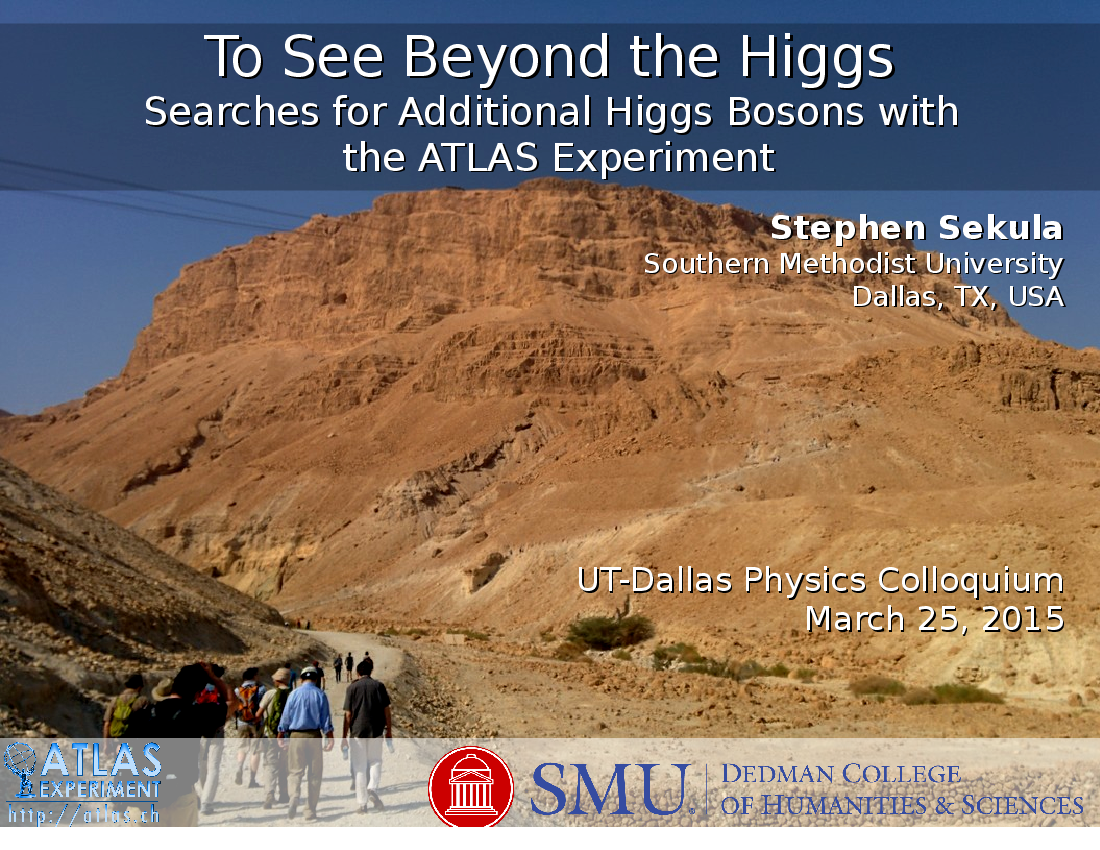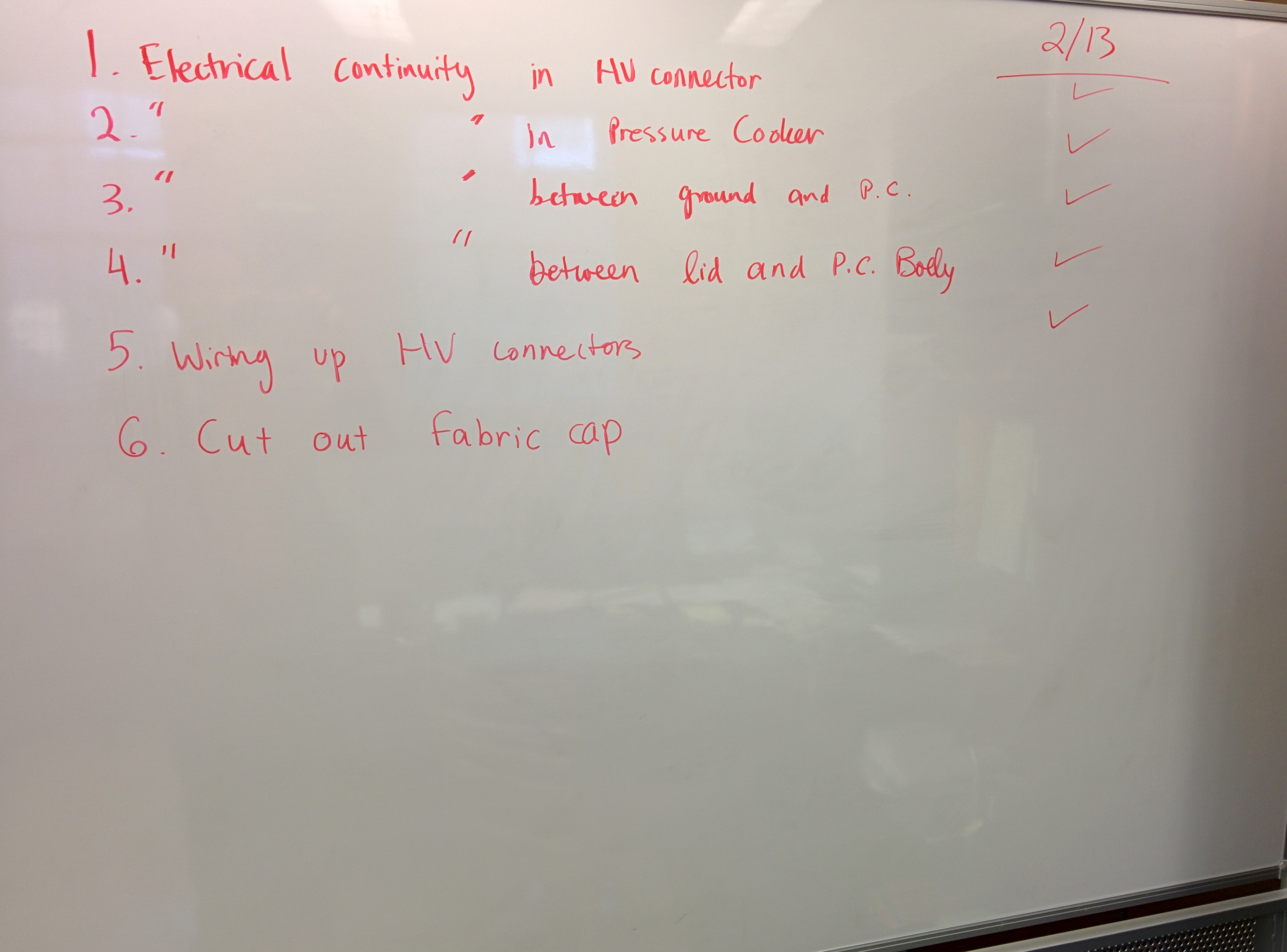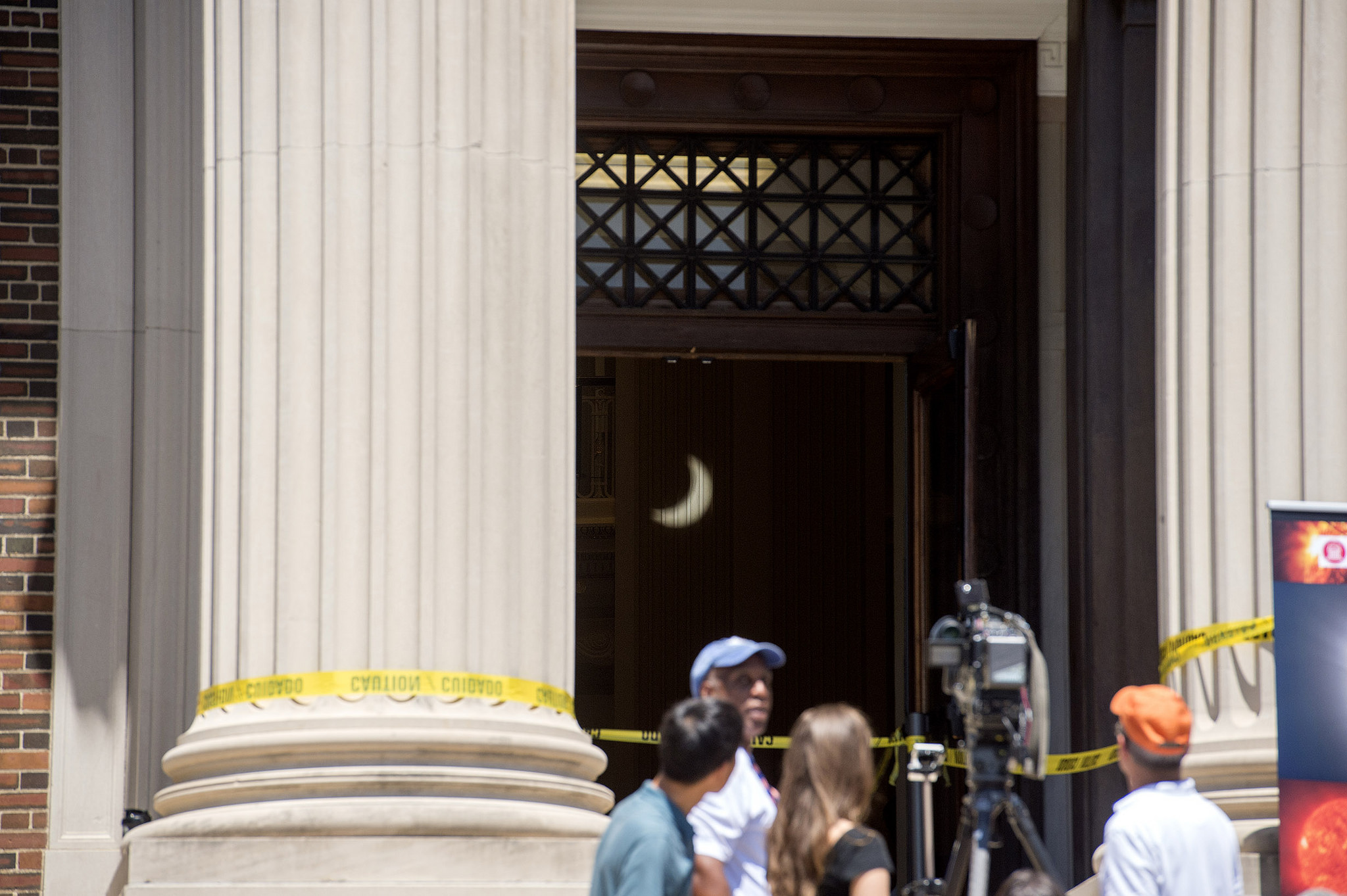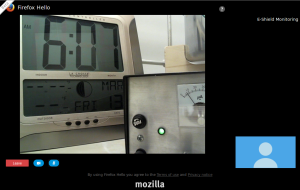
It’s that time again – time to think back long and hard on the week that was. The past 7 days were filled with something called “Spring Break,” though I haven’t worked this hard since the fall semester. While this was far from a vacation, it was productive. That wayward power supply showed up and let us finally get an important experiment running. The SMU ATLAS group concluded its miniature workshop on our ongoing or planned ATLAS Trigger and Data Acquisition work. Jodi traveled a lot, and will continue to travel more. And more!
Here are the highlights.
-

The new high-voltage power supply (black box, lower left) wired into the pressure cooker we are using as a radon exposure chamber. Visible inside the chamber is the nickel-copper anode cap that slides over the copper sample holder. The wayward high-voltage power supply finally arrived on Monday morning. The rest of the day was spent climbing the high-voltage learning curve, which had to happen in just hours instead of days or weeks. The only major lesson was the thickness of insulation used on cabling; I had grossly underestimated how much is needed when you are operating 10kV or more. That problem was quickly addressed (image left) and we were able to start running the electric field radon mitigation experiment. The picture above shows a snap from Firefox Hello, which we are using to monitor the experiment. We had been using BigBlueButton, but the camera on the laptop in the lab kept disconnecting for unknown reasons after 12 hours of operation. The disadvantage of Firefox Hello is that it’s a two-person connection ONLY, which means only one person can monitor the experiment at one time. The radon exposure concludes Saturday afternoon with data collection and analysis to follow.
- We spent the rest of the week preparing the data analysis of all the studies from the past two months. We needed to assess whether different radon mitigation methods have meaningful impacts on radon daughter implantation on materials. We have a good framework for analyzing that data now, and we’ll be running it in real time over the weekend as we collect data from the electric field experiment.
- Our local ATLAS group had the second and final day of a miniature workshop, intended to let us learn about each other’s work on aspects of ATLAS Trigger and Data Acquisition (including quality monitoring). Two students presented aspects of their work on data quality monitoring and b-jet triggers, and I think that this local workshop was a great success. I certainly learned a lot and had a lot of fun while doing it.
- Jodi has been traveling for most of the week. She’s back now, but will leave again on Sunday for a meeting at the Pacific Northwest National Laboratory. We will meet up in Seattle on Tuesday night for the start of the Low Radioactivity Techniques conference, where two of our students are to present their combined radon mitigation work.
- I spent part of the week tracking down a small bug that messed up the “five-flavor scheme” calculation of charged Higgs production cross-sections at the LHC for 13 TeV running. The 80,000 jobs needed to generate the results are now slowly churning through the SMU ManeFrame supercomputer.
- This was a quiet week for teaching. Obviously, due to Spring Break there were no classes. My students have an exam next Thursday, with in-class problem solving on Tuesday to review for the exam. So this is a slow period for class material and development. That’s OK – my research productivity is presently through the roof.

